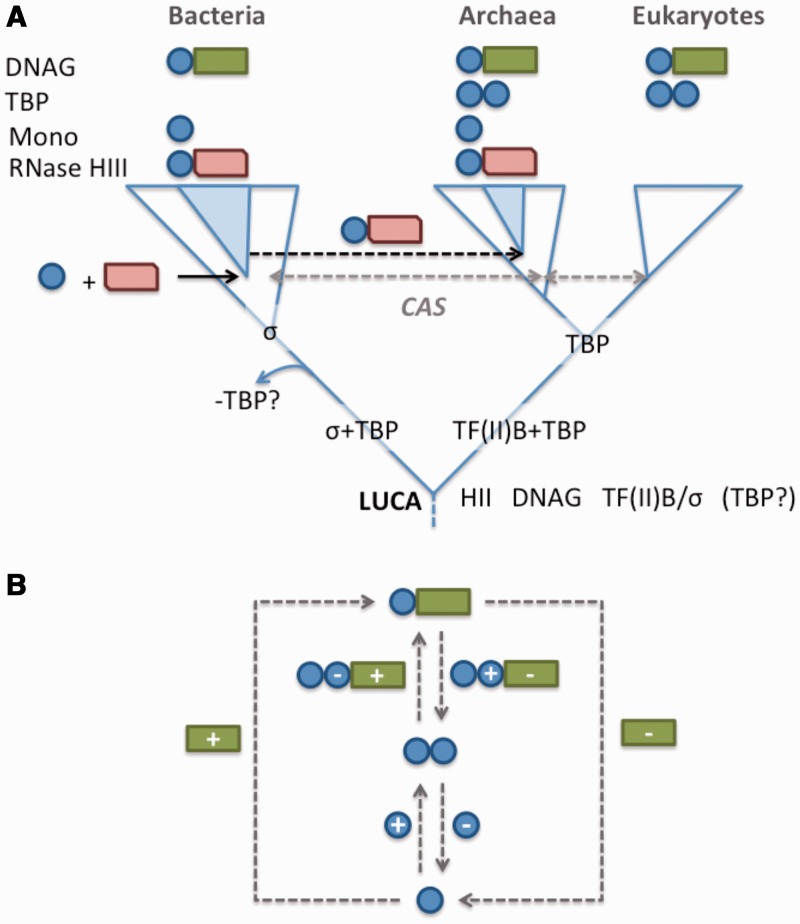Figure 8.
Evolutionary history of the TBP-domain. (A) Evolutionary distribution of the TBP-domain containing proteins across the three domains of life. DNAG: DNA glycosylase; Mono: single TBP-domain proteins; CAS: a TBP-domain protein distributed across the three kingdoms, identified by Iyer et al. (17). The authors concluded that the distribution of this protein is likely the outcome of horizontal gene transfer, though this has yet to be confirmed using phylogenetic methods. Speculation that TF(II)B and σ-factors are evolutionarily related (65) could be consistent with the replacement of TBP in the lineage leading to bacteria (placing TBP in LUCA) or with evolution of TBP in the lineage leading to archaea and eukaryotes. The tree depicts a three-kingdom architecture to aid in reading. A proposed archaeal origin for eukaryotes (66) does not alter the interpretation given here. (B) All possible fission and fusion events that could account for the evolution of single TBP-domain proteins (single blue circle), TBP (two blue circles) and DNA glyosylases (blue circle + green rectangle). Plus signs (+) indicate domain fusion events, minuses (−) represent fission (domain loss).

